The Timeless Journey of Turtles: From Ancient Origins to Modern Conservation
Turtles, with their distinctive shells and peaceful demeanor, have intrigued humans for centuries. As one of the oldest reptile groups, they hold secrets of the ancient world, long before humans walked the Earth. This blog post explores the evolution, anatomy, and incredible journey of turtles, highlighting their importance and the urgent need for their conservation.
Evolution and Ancient Origins

This scene vividly brings to life the rich diversity and beauty of the late Triassic period, highlighting the ancient world in which these creatures thrived.
Turtles are among the most ancient reptiles on our planet, with a lineage that stretches back over 200 million years, making them contemporaries of the dinosaurs. Unlike many species that have come and gone, turtles have endured the test of time, adapting to changes and thriving in various environments.
Turtles: Enduring Symbols of Resilience

Turtles are captivating reptiles boasting an incredibly ancient lineage. Fossil records indicate their presence on Earth for over 230 million years, placing them alongside dinosaurs during the Triassic period. Unlike many species that have vanished throughout history, turtles have persevered, demonstrating remarkable adaptability that has allowed them to thrive in diverse environments across the globe.
Secrets to Their Success
Several factors contribute to the enduring success of turtles:
-
Protective Shells: Their iconic shells provide exceptional defense against predators. The upper shell (carapace) and lower shell (plastron) are fused to the turtle's backbone and ribs, offering a shield against attacks.
-
Dietary Versatility: Turtles exhibit a wide range of feeding habits, with some species being carnivorous, herbivorous, or omnivorous. This dietary flexibility allows them to exploit various food sources and survive in different ecosystems.
-
Physiological Adaptations: Some turtle species possess unique physiological adaptations that enhance their survival. For instance, aquatic turtles can extract oxygen from water through a process called cloacal breathing, allowing them to stay submerged for extended periods.
-
Reproductive Strategies: Turtles lay leathery eggs on land, and depending on the species, they may exhibit temperature-dependent sex determination (sex is influenced by incubation temperature). This strategy allows for population control and adaptation to environmental changes.
Masters of Adaptation: A Glimpse into Turtle Diversity
Turtles have diversified into an impressive array of shapes, sizes, and ecological niches. Here are a few examples:
-
Sea Turtles: These majestic creatures navigate vast oceans, undertaking incredible migrations. Their streamlined bodies and powerful flippers make them expert swimmers.
-
Tortoises: These giants of the land dwell in various habitats, from arid deserts to lush rainforests. Their sturdy shells and slow metabolism enable them to survive in harsh environments.
-
Box Turtles: These land dwellers possess a hinged lower shell that allows them to completely enclose themselves within their armor for protection.
-
Softshell Turtles: These unique turtles lack a rigid bony carapace and instead have a leathery, flexible shell, allowing them to burrow in mud or sand for camouflage.
Threats and Conservation Efforts
Despite their resilience, turtles face various threats today, including habitat loss, illegal wildlife trade, and climate change. Conservation efforts are crucial to ensure their survival. These efforts involve protecting nesting sites, mitigating threats, and educating the public about the importance of turtle conservation.
By appreciating the remarkable evolutionary journey and adaptations of turtles, we gain a deeper understanding of the importance of protecting these enduring symbols of resilience.
Anatomy and Shell Structure

The shell of a turtle, made up of a carapace (top) and a plastron (bottom), is not just its home but its fortress. This bony, cartilaginous structure is integral to the turtle's skeleton, offering protection from predators. Contrary to popular belief, turtles cannot leave their shells; they are as much a part of the turtle as our ribs are to us.
The Remarkable Turtle Shell: A Built-in Body Armor
The shell of a turtle is a marvel of evolution, offering a protective haven and playing a crucial role in its survival. It's not just a detachable house; it's an integral part of the turtle's skeletal system, as interconnected as our ribs and spine. Let's delve deeper into the materials that make up this remarkable structure, its strength, and how it grows.
Building Blocks of the Shell
The turtle shell is a composite structure composed of several key materials:
-
Bony Plates: The carapace (upper shell) and plastron (lower shell) are covered in tough, keratinized scutes. These scutes are similar in composition to our fingernails and are anchored to underlying bony plates.
-
Dermal Bones: Embedded within the dermis (leathery skin layer) of the turtle lie dermal bones. These bones are unique to turtles and fuse together to form the carapace and plastron, providing structural support and rigidity to the shell.
-
Costal Cartilage: The ribs of a turtle are not like ours. Instead, they are flattened and broadened, forming a network of cartilage that fuses with the carapace, further strengthening the shell's structure.
A Fortress of Strength
The turtle shell is surprisingly strong for its weight. The unique combination of bony plates, dermal bones, and costal cartilage creates a lightweight yet remarkably sturdy structure. Here's what contributes to the shell's strength:
-
Distribution of Forces: The curved shape of the shell helps distribute the impact of a predator's attack across a wider area, minimizing damage to the turtle's body.
-
Bony Reinforcements: The dermal bones act as internal pillars, providing structural support and preventing the shell from collapsing under pressure.
-
Keratinized Scutes: The tough outer scutes offer scratch and abrasion resistance, protecting the underlying bone from minor injuries.
Shell Growth: A Slow and Steady Process
Unlike shedding snakeskin, a turtle cannot simply outgrow its shell. The shell grows throughout the turtle's life, albeit at a slow pace. Here's how it happens:
-
Growth Rings: Similar to tree rings, the scutes on the shell develop concentric growth rings. By studying these rings, experts can estimate the age of a turtle.
-
Continuous Bony Deposition: New bone is continuously deposited along the edges of the carapace and plastron, causing the shell to gradually expand over time.
-
Molting of Scutes: The outer layer of the scutes may wear down over time and be molted in small flakes, revealing a new layer underneath.
It's Important to Note
- The rate of shell growth can vary depending on the species, diet, and environmental factors.
- Some turtle species exhibit more pronounced growth rings on their scutes than others.
- The shell is an integral part of a turtle's biology, offering not only protection but also housing vital organs and muscles. Understanding its composition, strength, and growth process provides a deeper appreciation for the remarkable adaptations that have allowed turtles to thrive for millions of years.
Diet and Feeding Habits
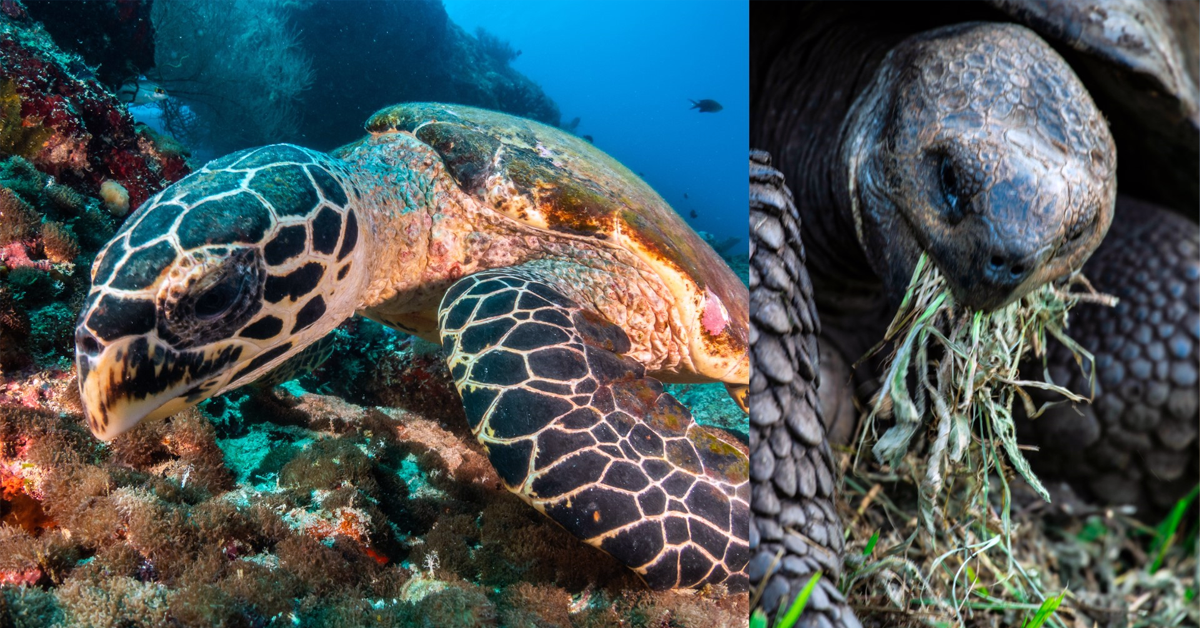
Turtles have diverse diets that vary greatly depending on their habitat. Land-dwelling turtles may feast on beetles, fruits, and grasses, while their sea-dwelling counterparts have diets ranging from algae to squid and jellyfish. This variety in diet reflects the adaptability of turtles to their environments.
A Turtle's Table Manners: Exploring Their Diverse Diets
Turtles are gastronomic marvels, exhibiting remarkable dietary diversity that reflects their remarkable adaptability across various habitats. From the leafy greens munched by land dwellers to the jellyfish feasts of their seafaring cousins, a turtle's diet is a fascinating reflection of its environment.
A Nutritional Breakdown
The specific ratio of protein, carbohydrates, and minerals in a turtle's diet varies depending on the species and its food sources. Here's a general breakdown:
-
Protein: Protein is an essential nutrient for growth, repair, and reproduction in turtles. Carnivorous and omnivorous species typically require a higher percentage of protein (around 30-50%) in their diet compared to herbivores (around 10-20%).
-
Carbohydrates: Carbs provide energy, and the source can vary depending on the diet. Herbivorous turtles get their carbs from cellulose in plants (around 20-40%), while some omnivores may consume fruits or starchy vegetables for carbohydrates.
-
Minerals: Calcium is crucial for maintaining a strong shell and bones. Other essential minerals include phosphorus, magnesium, and sodium, all obtained from their food sources.
Fasting Facts: How Long Can a Turtle Go Without Food?
Turtles are surprisingly resilient when it comes to food deprivation. The exact duration depends on various factors like species, health, and ambient temperature. However, some general guidelines exist:
-
Healthy Adults: Healthy adult turtles can typically survive for weeks, or even months, without food. This ability is attributed to their slow metabolism and efficient energy storage.
-
Hibernation: During brumation (a reptile's equivalent of hibernation), turtles can survive for months without feeding by relying on stored energy reserves.
-
Importance of Regular Feeding: While they can survive periods without food, it's crucial to provide pet turtles with a balanced diet to ensure their long-term health and well-being.
Land vs. Sea: A Tale of Two Turtle Pantries
The diets of land and sea turtles diverge significantly, reflecting the distinct environments they inhabit:
-
Land Dwellers: These turtles are a varied bunch, with some species being:
- Carnivores: Some land turtles, like snapping turtles, are fierce predators that enjoy insects, worms, and even small vertebrates.
- Omnivores: Many land turtles, like box turtles, have a mixed diet of fruits, vegetables, insects, and snails.
- Herbivores: Tortoises are primarily herbivores, munching on grasses, leaves, and flowers.
-
Sea Turtles: These ocean nomads have fascinating feeding habits based on their life stage and location:
- Early Life: Sea turtle hatchlings often feed on plankton and small floating organisms.
- Immatures: As they grow, their diet expands to include jellyfish, seaweed, sponges, and small crustaceans.
- Adults: Depending on the species, adult sea turtles may specialize in feeding on:
- Herbivores: Green sea turtles graze on seagrasses.
- Omnivores: Loggerhead sea turtles consume a variety of items like jellyfish, mollusks, and fish.
- Carnivores: Leatherback sea turtles are the deep-sea divers of the turtle world, feasting primarily on jellyfish.
Oceanic Odyssey: How Sea Turtles Travel for Food
Sea turtles are incredible navigators, undertaking vast migrations to find food sources. Here's how they accomplish this feat:
-
Magnetic Fields: Scientists believe sea turtles possess an internal compass that allows them to sense the Earth's magnetic field and use it for navigation.
-
Temperature Cues: Sea turtles may use water temperature changes to identify currents and locate favorable feeding grounds.
-
Olfaction: Some studies suggest that sea turtles may use their sense of smell to locate food sources, particularly in coastal areas.
-
Generational Learning: Young sea turtles may learn migration routes from observing the behavior of older generations.
By understanding the diverse diets and remarkable adaptations of turtles, we gain a deeper appreciation for these fascinating creatures and the vital role they play in their ecosystems.
Habitats and Adaptations
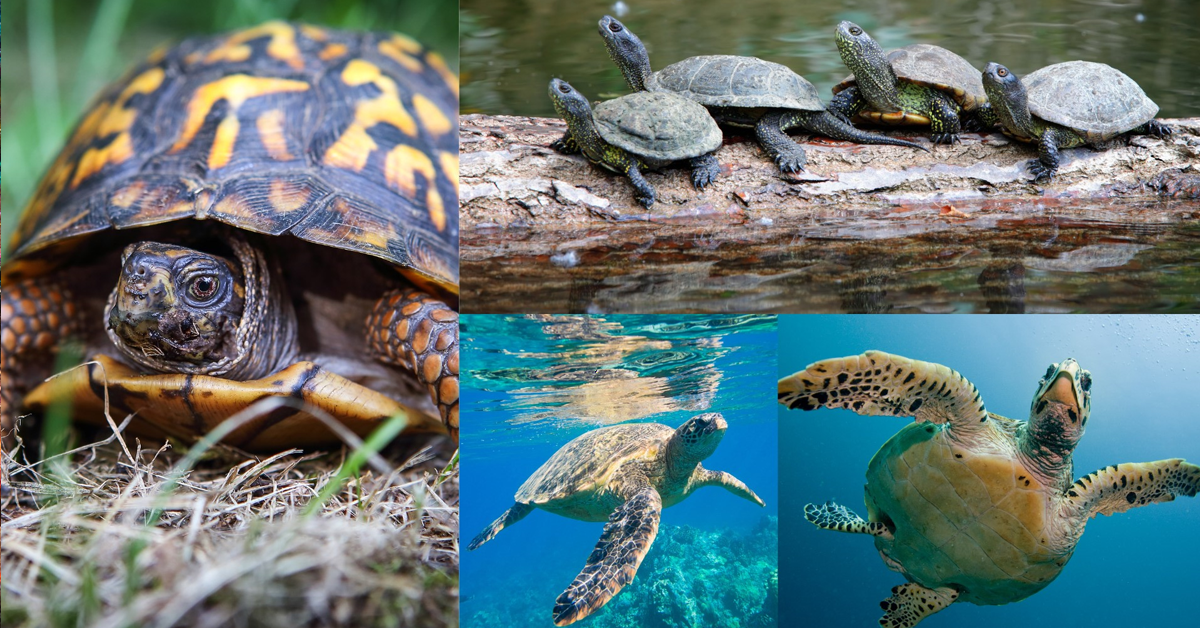
From freshwater ponds and lakes to the vast oceans and dry terrestrial environments, turtles have made nearly every corner of the world their home. Their physical adaptations, like webbed feet for swimming or flippers for ocean navigation, showcase their evolutionary ingenuity.
Turtle Travels: Unveiling the Secrets of Migration and Movement
Turtles are nature's champion explorers, conquering diverse habitats from freshwater oases to sprawling oceans. Their remarkable physical adaptations, like webbed feet for aquatic life and flippers for navigating vast oceans, are testaments to their evolutionary prowess. Let's delve into the fascinating world of turtle movement, exploring their speed, migration patterns, and the reasons behind their journeys.
Speed Demons and Leisurely Loungers
The travel speed of turtles varies considerably depending on the species and their environment:
-
Land Dwellers: Generally, land turtles are slow and methodical movers. Most species lumber along at a pace of 0.5 to 1 mph (0.8 to 1.6 km/h). However, some desert tortoises can reach surprising bursts of speed, up to 3 mph (4.8 km/h), for short sprints.
-
Sea Turtles: These ocean voyagers are surprisingly fast swimmers. Leatherback sea turtles, the speedsters of the turtle world, can propel themselves through the water at an impressive 22 mph (35 km/h). However, their average cruising speed is closer to 5-7 mph (8-11 km/h).
Travel Time and Triggers
Migration patterns in turtles also differ greatly:
-
Non-migratory: Many turtle species, particularly those dwelling in stable environments with year-round food availability, exhibit minimal movement and remain within a home range throughout their lives.
-
Seasonal Migrants: Some species, like the Eastern Box Turtle, undertake seasonal migrations, often driven by changes in temperature or food availability. These migrations are typically shorter, covering a few miles.
Sea vs. Land Turtle Travels
-
Sea Turtle Migrations: Sea turtles are renowned for their epic migrations, some traversing thousands of miles across oceans. These migrations are often cyclical, with turtles returning to specific nesting beaches to lay their eggs. The reasons behind these migrations include:
-
Favorable Nesting Sites: Females travel to specific beaches that offer ideal conditions for egg laying and hatchling development.
-
Food Availability: Sea turtles may migrate to areas with abundant food sources depending on the season and their dietary needs.
-
Warmer Waters: Some migrations may be driven by the search for warmer waters, particularly for pregnant females or during colder months.
-
-
Ground Turtle Movement: Land turtle movements are generally less extensive. However, some species may undertake short migrations to find breeding grounds, new food sources, or suitable overwintering sites.
Return to the Familiar: Loyalty to Nesting Sites
Sea turtles, particularly females, exhibit a remarkable degree of fidelity to their nesting beaches. After maturing, they often return to the same beach where they hatched to lay their own eggs. This behavior, known as natal homing, is thought to be guided by a combination of factors like:
-
Magnetic Fields: Sea turtles may use the Earth's magnetic field to imprint on the location of their natal beach.
-
Olfaction: Some scientists believe that sea turtles may use their sense of smell to recognize familiar scents associated with their hatching ground.
-
Visual Cues: As hatchlings, they may imprint on visual landmarks near their nesting beach, aiding them in navigation when they return as adults.
Understanding the Why Behind the Journey
The reasons behind turtle migrations are complex and can vary depending on the species and its environment. Here are some common reasons:
-
Reproduction: Finding suitable nesting sites for egg laying is a primary driver of migration, especially in sea turtles.
-
Food Availability: Seasonal changes in food resources may prompt turtles to migrate to areas with more abundant feeding grounds.
-
Favorable Temperatures: Some turtles may migrate to warmer or cooler waters depending on their physiological needs and breeding cycles.
-
Avoiding Threats: Escaping predators or harsh environmental conditions can also be a factor influencing migration patterns.
By understanding the diverse travel behaviors and motivations of turtles, we gain a deeper appreciation for their resilience and the remarkable adaptations that allow them to thrive in a variety of environments.
Life Span and Longevity
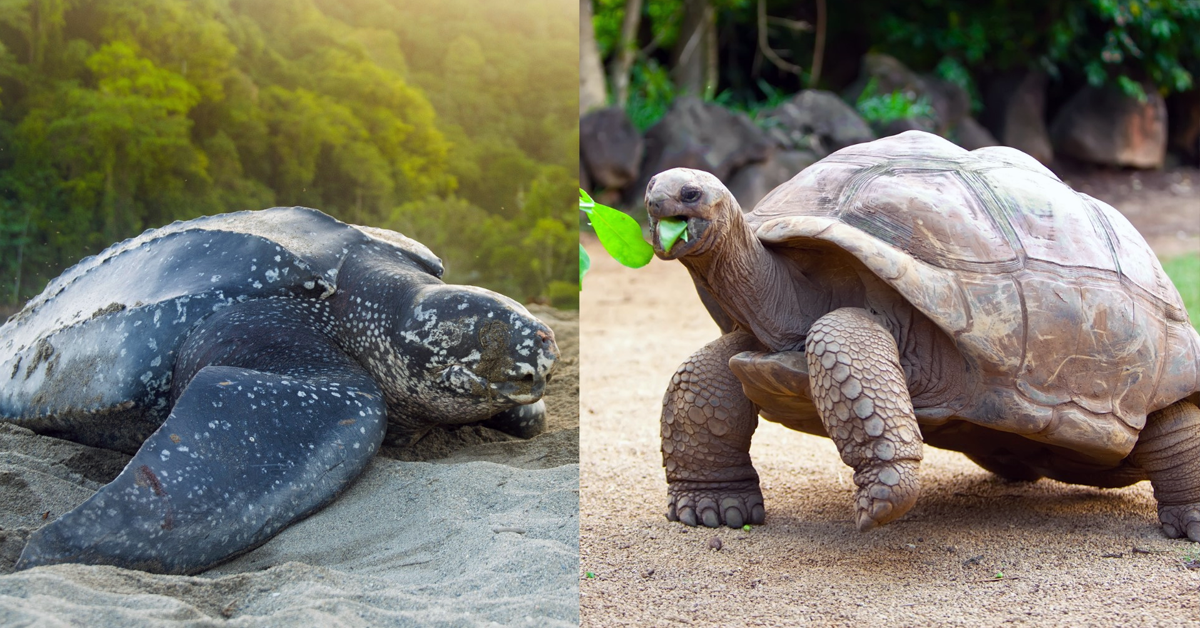
Turtles are renowned for their long lifespans, with many species living several decades and some, like Tu’i Malila, reaching or exceeding a century. Their slow metabolism and cold-blooded nature contribute to their remarkable longevity.
Unveiling the Secrets of the Turtle Life Cycle: From Hatchling to Centenarian
Turtles are champions of longevity, captivating us with their extended lifespans. While some species live for "just" a few decades, others, like the legendary Tu'i Malila, push the boundaries, reaching or exceeding a century. Let's delve into the fascinating world of the turtle life cycle, exploring everything from lifespans and hatching periods to survival strategies and social behaviors.
A Tale of Two Timelines: Lifespan Variations
The lifespan of a turtle varies considerably depending on the species:
-
Land Dwellers: Many land turtle species, like box turtles and tortoises, are true masters of aging. They can live for 50-80 years, with some giants like the Galapagos tortoise reaching well over 100 years.
-
Sea Turtles: Sea turtles also boast impressive lifespans. Loggerhead sea turtles can live for around 60-70 years, while Leatherback sea turtles may reach 80 years or more.
Hatching Hopes: A Time of Vulnerability
The incubation period for turtle eggs also varies depending on the species and environmental factors like temperature. Here's a general timeframe:
-
Land Turtles: Land turtle eggs typically incubate for 60-90 days, with some species taking up to 120 days.
-
Sea Turtles: Sea turtle eggs incubate in the warm sand for around 50-70 days.
Navigating a World of Danger: Hatchling Survival
Unfortunately, the journey from egg to adulthood is fraught with peril for baby turtles. Here's a breakdown of the challenges they face:
-
Low Survival Rate: Only a small percentage, estimated around 1 in 1,000 hatchlings, survive to adulthood.
-
Predators: Eggs and hatchlings are vulnerable to a variety of predators, including mammals, birds, reptiles, and even some fish.
Built-in Body Armor: Protective Mechanisms
Despite the challenges, turtles possess some remarkable adaptations that enhance their survival:
-
Hard Shells: The iconic shell provides crucial protection for turtles of all ages, offering shelter from predators.
-
Camouflage: Many turtle species, particularly hatchlings, have excellent camouflage that helps them blend in with their surroundings.
-
Defensive Behaviors: Some turtles can withdraw completely into their shells, while others may hiss or bite when threatened.
The Search for the Perfect Cradle: Nesting Site Selection
Choosing a nesting site is crucial for a turtle's reproductive success. Here's how they navigate this critical decision:
-
Land Turtles: Female land turtles typically seek out well-drained, sandy areas with adequate sun exposure for egg incubation. They may utilize nesting sites used by previous generations.
-
Sea Turtles: Sea turtles exhibit a remarkable behavior called natal homing, where females return to the same beach where they hatched to lay their own eggs. Factors like sand quality, suitable temperature for incubation, and minimal disturbance likely influence their choice.
Old Haunts or New Adventures: Nest Site Fidelity
The nesting behavior of turtles varies:
-
Site Fidelity: Sea turtles, particularly females, demonstrate a strong fidelity to their natal beaches, returning there to lay eggs repeatedly throughout their lives.
-
New Horizons: Land turtles may use established nesting sites, but they may also explore new locations depending on factors like habitat suitability and resource availability.
Land vs. Sea: A Tale of Two Turtle Worlds
Quick Comparison: Sea Turtles vs. Land Turtles
| Feature | Sea Turtles | Land Turtles |
|---|---|---|
| Habitat | Oceans | Land (freshwater or terrestrial) |
| Flippers or Legs | Flippers for swimming | Legs for walking |
| Diet | Carnivorous, omnivorous, or herbivorous depending on species | Carnivorous, omnivorous, or herbivorous depending on species |
| Migration | Many species undertake long migrations | Some species undertake short migrations |
Courtship and Coupling: The Mating Game
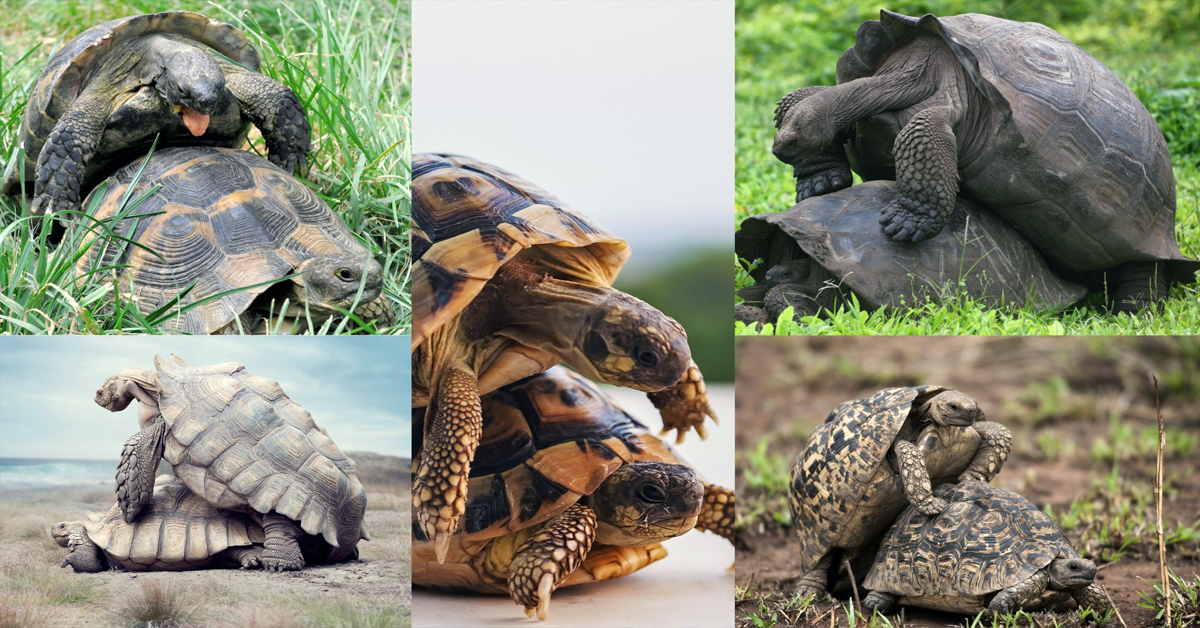
Mating frequency in turtles varies depending on the species and age. Here's a general overview:
-
Mating Frequency: Turtles may mate every year or every few years, with some species taking even longer intervals.
-
Partner Selection: Mating rituals and partner selection can vary between species. Size, strength, and visual cues may play a role.
Bonds Beyond the Moment: Turtle Relationships
Unlike some animals that form lasting pair bonds, turtles are generally not known for complex social interactions. Here are some key points:
-
Solitary Creatures: Most turtle species are solitary creatures, only interacting with others during mating seasons.
-
Family Recognition and Parental Care: In most turtle species, parents do not exhibit parental care after laying eggs. Hatchlings are on their own from the moment they emerge. However, some exceptions exist. Sea turtles like Leatherbacks may exhibit short-term beach attendance after laying eggs, while some desert tortoises may recognize and show tolerance towards their offspring.
-
Group Living: While most turtles are solitary, some species may occasionally share basking spots or feeding grounds. However, these interactions are not social bonds, and the turtles typically maintain individual territories.
-
Mating Season: Mating season varies depending on the species and climate. For many turtles, mating coincides with warmer months, often in the spring or early summer.
By exploring the diverse aspects of turtle lifespans, hatching periods, survival strategies, and social behaviors, we gain a deeper appreciation for these ancient creatures and the intricate balance of nature that supports their enduring existence.
Conservation and Endangered Species
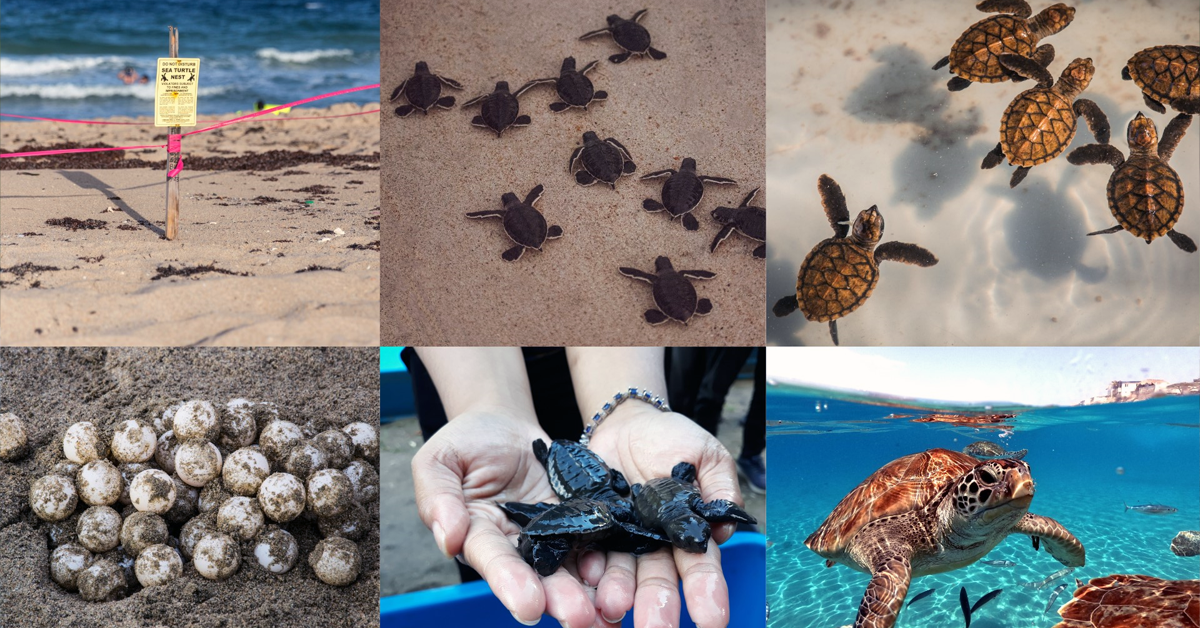
Despite their resilience, many turtle species face threats from habitat loss, pollution, poaching, and the illegal pet trade. Conservation efforts are crucial to protect these ancient mariners. By safeguarding their habitats and enforcing laws against illegal trade, we can help ensure turtles continue to thrive for generations to come.
Threats to Turtles and How You Can Help
Turtles, despite their resilience and long lifespans, face a multitude of threats in the modern world. Here's a breakdown of the challenges they encounter and how you can contribute to their conservation:
Threats
-
Habitat Loss: Habitat destruction due to deforestation, development, and agriculture is a major threat, depriving turtles of their homes and food sources.
-
Pollution: Pollution of waterways with plastics, chemicals, and agricultural runoff can harm turtles directly and disrupt their food chains.
-
Poaching: Adult turtles are sometimes poached for their meat and eggs, particularly in some regions of Asia and Southeast Asia.
-
Illegal Pet Trade: The illegal capture and trade of turtles for the pet industry threatens wild populations, especially for hatchlings and juvenile turtles.
-
Climate Change: Rising sea levels and changes in weather patterns can disrupt nesting grounds and food availability for sea turtles.
Conservation Efforts
Fortunately, dedicated organizations and individuals are working tirelessly to protect turtles. Here are some ways you can get involved:
Support Conservation Organizations
Contribute to reputable organizations like:
-
The World Wildlife Fund focuses on global conservation efforts, including protecting endangered turtle species.
-
The Sea Turtle Conservancy works specifically on sea turtle conservation through research, education, and advocacy.
-
The Turtle Conservancy focuses on captive breeding programs for endangered turtle species and reintroduction efforts.
Reduce Your Environmental Impact
Minimize your carbon footprint and support sustainable practices to lessen the impact of climate change on turtle habitats.
Be a Responsible Pet Owner
If considering a pet turtle, adopt from a reputable source and ensure the species is legal to own in your area. Never purchase turtles from the illegal pet trade.
Spread Awareness
Educate others about the threats turtles face and the importance of conservation.
Support Legislation
Advocate for laws protecting turtles and their habitats in your region.
Quantifying the Loss
Unfortunately, quantifying the exact percentage of turtles lost due to human activities is challenging. Turtle populations are difficult to track due to their secretive nature and vast habitats. However, studies suggest significant declines in some species.
Illegal Trade Explained
The illegal pet trade involves the capture, transportation, and sale of wildlife in violation of national and international laws. This trade often involves cruel capture methods, inadequate care for the animals, and the spread of diseases. Turtles are popular targets due to their perceived low-maintenance needs, leading to high demand and fueling the illegal trade.
Conservation Champions
Several countries are actively involved in protecting turtles through legislation and conservation efforts. Here are a few examples:
-
The United States: The Endangered Species Act protects numerous turtle species within the US and prohibits their trade.
-
Australia: Australia has strict laws protecting native turtles and implements conservation programs for endangered species.
-
Costa Rica: Costa Rica is a leader in sea turtle conservation, with numerous protected nesting beaches and educational programs.
By understanding the threats and taking action, we can ensure that these remarkable creatures continue to grace our planet for generations to come. Remember, even small actions can make a big difference for turtle conservation.
As we delve into the world of turtles, we discover not just fascinating creatures but a story of survival, adaptation, and the interconnectedness of life on Earth. The journey of turtles is a remarkable testament to the resilience of nature, and it's up to us to protect these ancient creatures and the environments they call home. Join us in celebrating and conserving the rich, diverse world of turtles.
Discover more about the natural world and how you can contribute to its conservation at Your Petz.